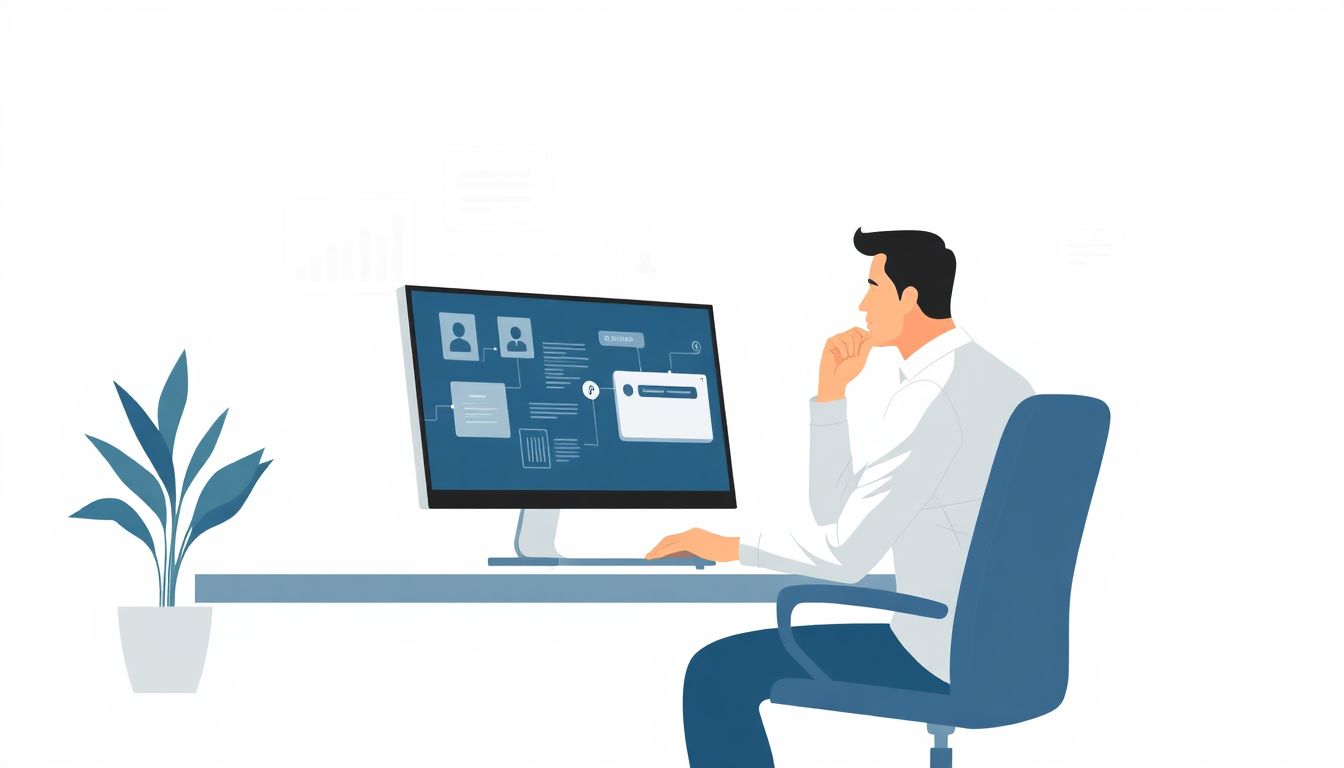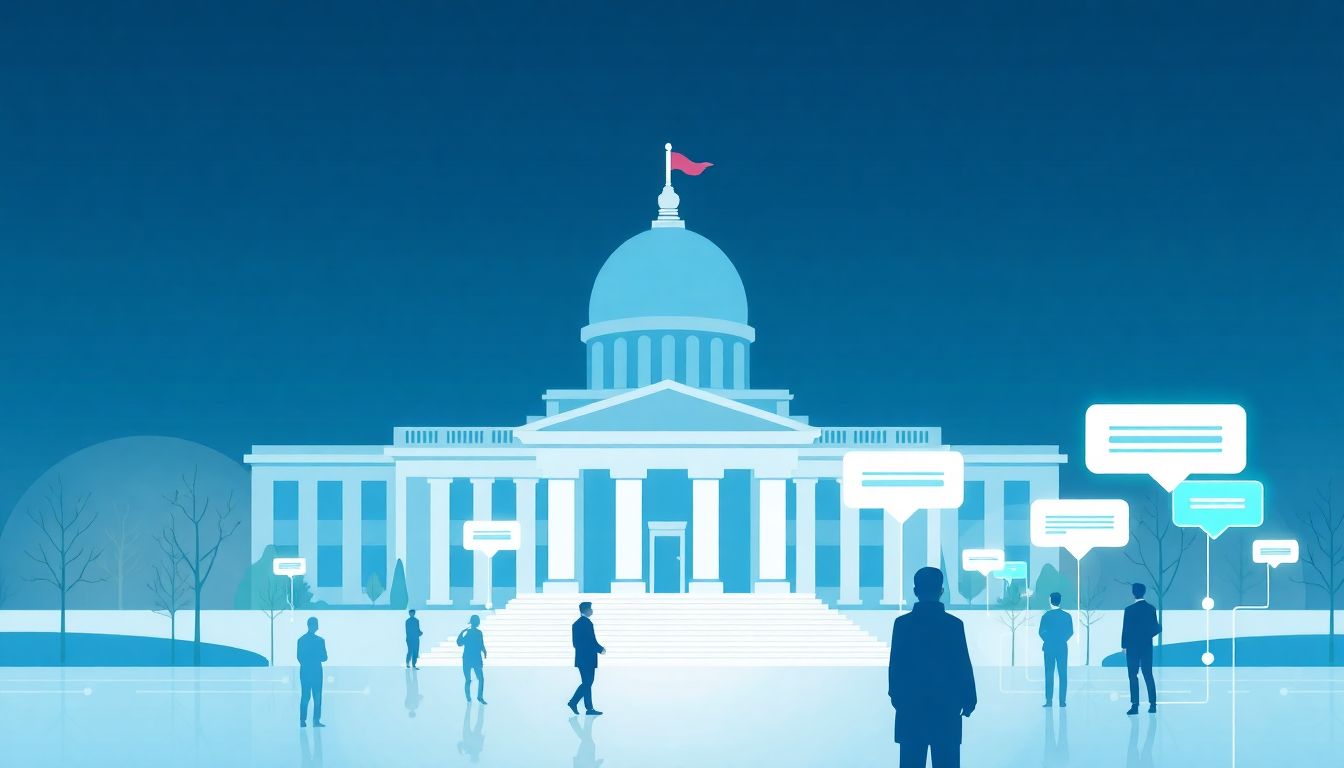Have you ever found yourself frustrated with government services, stuck in long queues or navigating confusing websites? You’re not alone! Many of us wish for simpler, faster, and more efficient ways to access public services without the bureaucratic hassle.
Well, you’re in for a treat! If you stick around for a bit, you’ll discover how ChatGPT can transform these tedious processes into seamless, user-friendly experiences. Imagine getting answers to your questions or completing tasks with just a few clicks—sounds dreamy, right?
In this post, we’ll explore the various ways ChatGPT can enhance government services, showcase some real-world examples, and discuss how agencies can effectively implement these solutions. Let’s dive in and see how AI can make our interactions with government smoother and more enjoyable!
Key Takeaways
- ChatGPT can simplify government services by automating citizen inquiries and providing quick, accurate responses.
- Improved efficiency in government operations allows employees to focus on more complex tasks.
- AI tools enhance communication and transparency, which can build public trust in government agencies.
- Real-world examples show reduced response times and improved public engagement during emergencies.
- Implementing ChatGPT requires careful planning, staff training, and monitoring for success.
- Challenges like data privacy, bias, and user acceptance must be addressed for effective implementation.
- The future of government services with AI includes proactive citizen engagement and 24/7 access to information.

How ChatGPT Can Improve Government Services
ChatGPT can significantly enhance government services by streamlining communication and improving accessibility.
This AI technology can automate responses to citizen inquiries, making it easier for individuals to access information and resources.
By integrating ChatGPT, public administrations can improve citizen engagement and streamline service delivery.
Imagine a virtual assistant available 24/7, answering questions about local services, permits, and regulations.
With ChatGPT, government agencies can foster more transparent communication, ultimately boosting public trust.
This technology can even handle complex queries, ensuring that citizens receive accurate information promptly.
Commands you can use with ChatGPT to improve government services include:
- “Provide a comprehensive overview of local health services available to citizens.”
- “List the steps required to obtain a business license in [insert city/state].”
- “Summarize recent changes in public transportation options in [insert area].”
Benefits of Using ChatGPT in Public Administration
The benefits of using ChatGPT in public administration are numerous and impactful.
First and foremost, it boosts administrative efficiency by automating routine inquiries.
This reduction in time spent on basic tasks allows government employees to focus on more complex issues that require human intervention.
Additionally, ChatGPT can provide real-time support for citizens, enhancing communication and satisfaction with government services.
Cost savings are another significant benefit, as AI can handle high volumes of inquiries without the need for extensive staffing.
The technology fosters transparency as it enables consistent and standardized responses to citizen questions.
Here are some prompts that can showcase the benefits of ChatGPT:
- “Outline the cost-saving measures that can be implemented using AI in local government.”
- “Provide a comparison of response times before and after implementing ChatGPT in the customer service department.”
- “Explain how ChatGPT can enhance public trust through transparent communication.”
Real-World Examples of ChatGPT in Government
There are several real-world examples showing how ChatGPT is being applied in government contexts.
Some municipalities have deployed AI chatbots to handle frequently asked questions about city services, drastically reducing response times.
In recent case studies, states have utilized ChatGPT to manage large volumes of public inquiries during emergencies, such as natural disasters.
This integration not only improves efficiency but also ensures the public receives timely updates and information.
One notable example includes a city that implemented ChatGPT to streamline the public records request process, cutting the fulfillment time by half.
These implementations highlight the potential for AI to transform governmental operations through improved accessibility and responsiveness.
If you’re curious about more applications of AI, consider exploring other articles on ChatGPT’s role in government or how it improves customer service interactions.
Key Areas Where ChatGPT Can Help Government Services
ChatGPT can assist in several key areas within government services to optimize operations.
It can effectively address citizen inquiries, providing quick and accurate responses to common questions.
This capability allows agencies to engage with the public more efficiently, reducing wait times for information.
ChatGPT also enhances data analysis for decision-making, improving resource allocation and service planning.
Moreover, automating routine administrative tasks frees up personnel to focus on more critical functions.
Strengthening public engagement through AI tools like ChatGPT helps create a more proactive government service culture.
Consider using these prompts to discover the potential applications in your local government:
- “Identify the top 10 inquiries citizens have regarding public services.”
- “Suggest ways to improve access to information for underserved communities using AI.”
- “Enumerate tasks in government that could be automated by AI to increase efficiency.”

Implementing ChatGPT Solutions in Government Agencies
Implementing ChatGPT in government agencies requires a strategic approach to ensure success.
First, identify specific areas within your agency where ChatGPT can have an immediate impact.
This could be anything from handling basic inquiries to assisting with administrative tasks.
Next, consider setting up a pilot program. Start small to test the waters before a full rollout.
Gather a team of tech-savvy staff members who can champion the integration process.
Training staff on how to utilize and manage ChatGPT effectively is crucial.
They should be comfortable with how to handle citizen interactions and understand the AI’s limitations.
Monitor feedback and engagement from users to tweak the system as it evolves.
Here’s a list of prompts to get you started with AI solutions:
- “Outline a step-by-step plan for launching a ChatGPT pilot program in a local government office.”
- “Identify potential barriers to integrating ChatGPT in public services and suggest solutions.”
- “Develop a training outline for staff working with ChatGPT solutions in government.”
Challenges and Considerations for Using ChatGPT in Government
Using ChatGPT in government settings does come with its challenges and considerations.
Data privacy is a significant concern as sensitive information may be involved.
Ensuring compliance with regulations and ethical standards is crucial before deployment.
Another challenge is potential bias in AI responses, which can affect trust and transparency.
Strategies must be in place to regularly audit and assess the AI’s outputs for fairness.
User acceptance is also a key aspect; government employees may resist changing their workflows.
Effective communication regarding the benefits of AI can mitigate this resistance.
Here are some prompts to navigate these challenges:
- “Evaluate ethical considerations for implementing ChatGPT in public services.”
- “List best practices to ensure data security when using AI technologies in government.”
- “Suggest methods for training employees to embrace AI tools like ChatGPT without resistance.”
Future of Government Services with AI Technologies
The future of government services is poised to dramatically change with AI technologies like ChatGPT.
We are moving towards more proactive governance, where technology plays a critical role in citizen engagement.
Agencies can utilize AI to anticipate citizen needs and streamline service delivery.
This shift could also foster a culture of continuous improvement within public administration.
As citizen expectations evolve, government services need to adapt with them.
With ChatGPT, agencies can provide 24/7 assistance, making information and services more accessible.
Below are prompts to explore future possibilities:
- “Predict the next big trends in AI for government services over the next decade.”
- “Identify opportunities where ChatGPT could enhance public engagement in local governance.”
- “Discuss how AI can evolve to meet changing citizen expectations in public service.”

Future of Government Services with AI Technologies
The future of government services is likely to be transformed by AI technologies like ChatGPT.
As these technologies evolve, they promise to make public interactions smoother and faster.
Agencies can leverage AI to better understand the needs of their citizens, enabling more tailored services.
This creates a shift towards a more proactive approach in governance, anticipating issues before they arise.
ChatGPT can facilitate continuous feedback loops, allowing citizens to voice their concerns anytime.
Imagine a government service that can adapt in real-time based on community feedback.
Here are some prompts to explore the future of AI in government service:
- “Forecast how AI could redefine public service delivery in the next 10 years.”
- “Identify ways that ChatGPT can improve public engagement in local governance processes.”
- “Discuss how AI technologies can evolve to meet the changing landscape of citizen needs and expectations.”
FAQs
ChatGPT can facilitate 24/7 interactions, ensuring citizens receive timely responses and support. By streamlining communication, it allows governments to engage more effectively and efficiently with the public.
Various governments have implemented ChatGPT for customer service, helping answer FAQs and process requests. Notable examples include local councils using AI chatbots for streamlined service inquiries.
Key challenges include ensuring data privacy, addressing public skepticism about AI, and integrating ChatGPT with existing systems. Additionally, training staff and managing change is crucial for successful implementation.
AI technologies, including ChatGPT, will likely lead to more efficient, transparent, and accessible government services. It promises enhanced decision-making processes and better fulfillment of public needs through intelligent automation.
